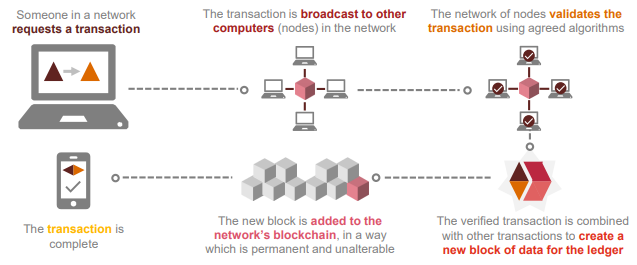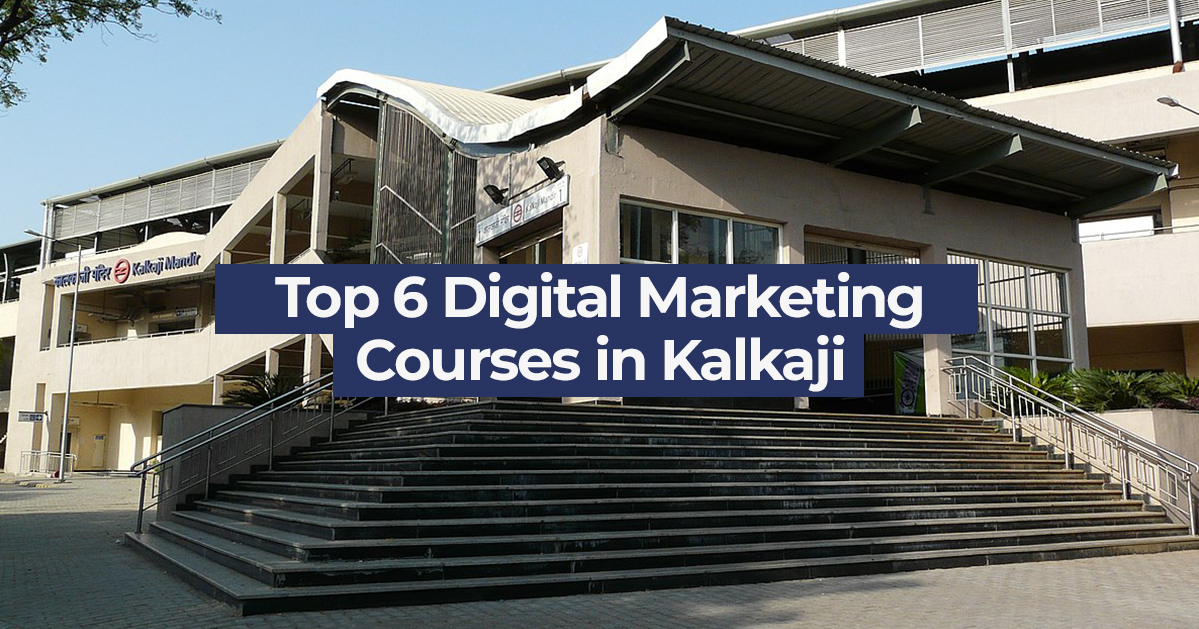Blockchain is still an emerging technology, so it is hard to understand how it works without looking into the code or getting deep into computer science concepts. To help with that, this introduction to Blockchain should get you started.
In this article, we give a short introduction to blockchain technology. The article covers the original idea and motivation, the mode of operation and possible applications of cryptocurrencies, and blockchain technology. Bitcoin is starting to come into its own as a digital currency, but the blockchain technology behind it could prove to be much more significant. The blockchain is the “Blueprint for a New Economy”.
Introduction to blockchain: What is Blockchain?
The blockchain is the public ledger of all Bitcoin transactions that have ever been executed. It is constantly growing as miners add new blocks to it (every 10 minutes) to record the most recent transactions. The blocks are added to the blockchain in a linear, chronological order. Each full node (i.e., every computer connected to the Bitcoin network using a client that performs the task of validating and relaying transactions) has a copy of the blockchain, which is downloaded automatically when the miner joins the Bitcoin network.
The blockchain has complete information about addresses and balances from the genesis block (the very first transactions ever executed) to the most recently completed block. The blockchain as a public ledger means that it is easy to query any block explorer (such as https://blockchain.info/) for transactions associated with a particular Bitcoin address—for example, you can look up your own wallet address to see the transaction in which you received your first Bitcoin.
In other words, it is a single LinkedList of a block, with each block containing a number of transactions. It provides a decentralized, immutable data store that can be used across a network of users, creates assets and acts as a shared black book that records all transactions. Each transaction can be easily queried, affording greater transparency and trust to all parties involved. The blockchain is immutable — information remains in the same state for as long as the network exists.
To dip digger into the history of Bitcoin, Bitcoin originated with the white paper that was published in 2008 under the pseudonym “Satoshi Nakamoto.” It was published via a mailing list for cryptography and has a similar appearance to an academic paper. The creators’ original motivation behind Bitcoin was to develop a cash-like payment system that permitted electronic transactions but that also included many of the advantageous characteristics of physical cash. To understand the specific features of physical monetary units and the desire to develop digital cash, we will begin our analysis by considering a simple cash transaction.
Introduction to Blockchain: How does it work?
We explain the concept of the blockchain by explaining how Bitcoin works since it is intrinsically linked to the Bitcoin. However, the blockchain technology is applicable to any digital asset transaction exchanged on-line.
The blockchain is a decentralized distributed ledger.Speaking in a human language — it is a network of computers having an identical copy of the database and changing its state (records) by a common agreement based on pure Mathematics.
In its basic form, any user who wants to write to the blockchain needs a public address and a private key. Every transaction should be signed with the private key, which is used to encrypt the message. Every time you buy or sell Bitcoin, a record is added to the Bitcoin blockchain and propagated to every node in the network. The system is safe because the information is duplicated thousands of times throughout different systems. A hacker would need to control 51% of the nodes to modify an existing record, which is considered unfeasible.
The fact that the ledger is maintained by a group of connected computers rather than by a centralized entity like a bank has several implications:
- While in our bank system we only know our own transactions and account balances, on the blockchain everyone can see everyone’s else transactions.
- While you can generally trust your bank, the Bitcoin network is distributed and if something goes wrong there is no help desk to call or anyone to sue.
- The blockchain system is designed in such a way that no trust is needed, security and reliability are obtained via special mathematical functions and code.
In order to be able to perform transactions on the blockchain, you need a wallet, a program that allows you to store and exchange your Bitcoins. Since only you should be able to spend your Bitcoins, each wallet is protected by a special cryptographic method that uses a unique pair of different but connected keys: a private and a public key.
If a message is encrypted with a specific public key, only the owner of the paired private key will be able to decrypt and read the message. On the other way, if you encrypt a message with your private key, only the paired public key can be used to decrypt it. When David wants to send Bitcoins, he needs to broadcast a message encrypted with the private key of his wallet, so he and only he can spend the Bitcoins he owns as David is the only one to know his own private key necessary to unlock his wallet. Each node in the network can cross-check that the transaction request is coming from David by decrypting the transaction request message with the public key of his wallet.
When encrypting a transaction request with your wallet’s private key you are generating a digital signature that is used by blockchain computers to double check the source and the authenticity of the transaction. The digital signature is a string of text that is the result of a combination of your transaction request and your private key, therefore it cannot be used for other transactions. If you change a single character in the transaction request message the digital signature will change, so no potential attacker can change your transaction requests or alter the number of Bitcoins you are sending.
So what is the difference between a private blockchain and existing third-party systems?
Blockchains can replace the need for data to flow from institutions to the third party and back. Instead, data flows between known institutions and comes to a consensus within a short period of time. This means that all parties can work from a single, known state of events. Encryption keeps private data private and digital signatures ensure authenticity, data integrity, and non-repudiation. Blockchains can solve the problem of needing to trust third parties.
Benefits of Blockchain:
- Speeding up transactions
- Blockchain’s verification system has the potential to enable near to or real-time processing and settlement of transactions.
- Cutting costs and complexity
- Blockchain can be used to orchestrate and automate interactions with external parties, as well as within your own processes.
- Reducing data duplication
- Blockchain provides a single shared view of the truth in your network, reducing data entry duplication and reconciliation.
- Increasing resilience
- Due to the distributed nature of blockchain, there is no single point of failure. This makes it significantly more resilient than current systems.
Governance and Trust
In a blockchain system, a majority of participants need to agree on data being added before it becomes part of the definitive blockchain. This is very different from central, often secretive ledgers held and controlled centrally. When multiple parties have a say over what data is written, the ability to alter data, or remove dubious data, it creates a more honest system. An example would be land registry systems.
When held centrally, a database administrator can easily make a change to records and cover their tracks without others knowing. If a land registry were held on a blockchain system with multiple participants (for example local government, regional government, perhaps other government branches and even NGOs), then the other parties would need to agree to make a change to a record, and any questionable changes would immediately be detected and not added without a majority consensus.
Who Runs Bitcoin? Who Runs Ethereum?
Public blockchains are distributed applications and are managed by the people running their nodes. These communities are highly decentralized and use internet forums to communicate. One of the main ways they communicate and make decisions is by adopting (or failing to adopt) new releases of the blockchain software.
Governance for Ethereum is a tad tighter: Development is managed by the Ethereum Foundation, which issues recommendations to the community running the network.
Conclusion
Much of the thought leadership regarding blockchains in financial services has focused on the context of Western Europe and the US but little has been explored within Asia. This is ironic given in the US, trust across state lines is high and uniform; in Europe, the market is more closely aligned by regulation.
But Asia is still behind in terms of levels of trust enabling greater economic activity. Asia’s geopolitical context is unique globally – the region consists of loosely coupled countries who want to trade with each other, yet levels of trust between countries are disparate, preventing the region from realizing its potential.
We believe that the most transformative blockchains will be those that can work across geopolitical boundaries. Southeast Asia has the most potential that can be unlocked with this technology, but we acknowledged that it may also be the hardset blockchains to implement.
We now have the technology for trust. With political will, investment, and industry collaboration, we believe that blockchains can improve the way business is done in Southeast Asia and increase economic prosperity as a result.
With the recent emergence of Blockchain, it becomes quite essential to know the relationship between IoT and Blockchain.










Blockchain is a great technology. And you also have shared a great and informative post. Thank you for sharing.